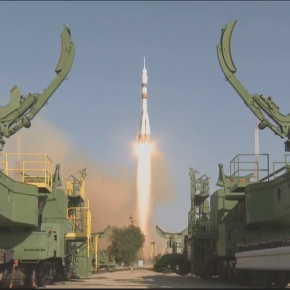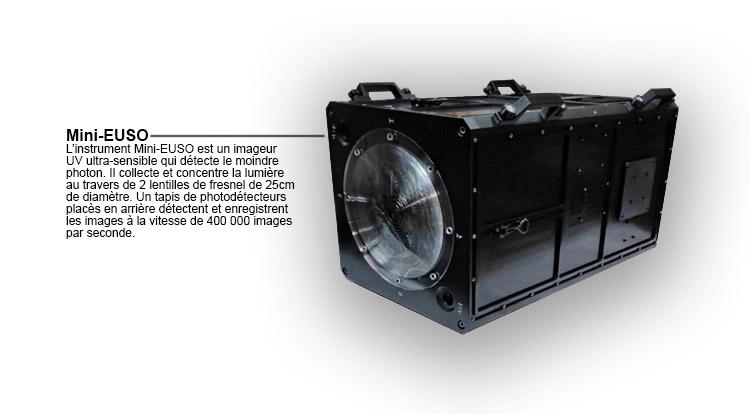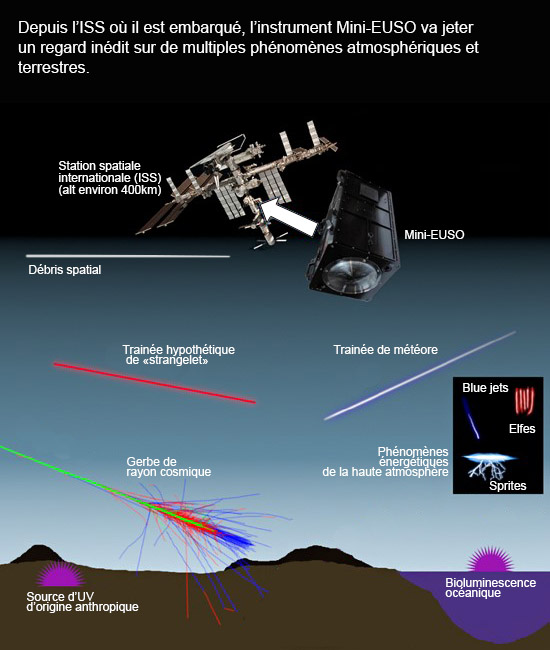Ultra-sensitive to UV rays, Mini-EUSO will take a new look at the Earth from space
A Soyuz rocket has just carried a unique new instrument to the international space station: Mini-EUSO. This imager, which is extremely sensitive to UV rays, will face the Earth. First and foremost developed to prepare for the hunt for ultra-high energy cosmic rays, it also promises to change our view of the blue planet and the luminous phenomena in its atmosphere.

Mini-EUSO (Multiwavelength Imaging New Instrument for the Extreme Universe Space Observatory) marks a new stage in the development of the “JEM-EUSO” programme (Observatoire Spatiale de l’Univers Extrême), in which several French teams are collaborating, and designed to study the most energetic particles in the universe in space: the “ultra-high energy cosmic rays”. With literally macroscopic energies, capable of reaching that of a tennis ball at 150 km/h, these particles, which seem to be simple nuclei of atoms accelerated by a mechanism yet to be elucidated, have travelled for tens of millions of years from unknown sources located in galaxies other than ours, before finishing their journey by causing a gigantic cascade of particles (called “sprays”) in the Earth’s atmosphere! It is the fluorescent light generated in the ultraviolet by the de-excitation of the air’s nitrogen molecules, themselves excited by the passage of these billions of secondary particles, that allows researchers to identify these particles, and to determine their energy and direction of arrival.
Observing cosmic rays from space
So it is indeed by looking at the Earth from space that scientists intend to open up a new way of study for cosmic ray astronomy. With a considerably increased detection capacity! Although these particles have intrigued astrophysicists since their discovery several decades ago, their study remains particularly difficult, because of their extreme rarity: barely one particle per square meter per billion years, for the most energetic among them! By placing an instrument in orbit, it should be possible to cover an unprecedented volume of atmosphere, on the lookout for these cosmic sheaves so precious for high-energy astrophysics and astroparticle physics.

Once it reaches the interior of the ISS, Mini-EUSO, a partnership between the Russian (RosCosmos) and Italian (ASI) space agencies, will be periodically placed by astronauts facing the quartz window of the Russian Zvezda module of the station, towards the atmosphere.
A map of the Earth of nocturnal UV emissions
With this instrument capable of detecting single photons in a field of view of 40° at a rate of 400,000 images per second, the international collaboration YWAM-EUSO, bringing together 300 researchers from 16 countries on 4 continents, is taking a new step in the development of its observation strategy. And if Mini-EUSO does not yet have the required size to directly observe ultra-high energy cosmic rays, due to a reduced light collection area compared to the final mission targeted, it will not only validate in real conditions all the technologies developed so far, but also implement a substantial observation program. it will make it possible, for the first time, to produce a map of the Earth’s night ultraviolet emission, with possible surprises, as well as a large number of multidisciplinary scientific objectives, ranging from the observation of meteors to the study of variations in the bioluminescence of plankton or algae, including the search for exotic particles of the “strangelets” type (new states of matter), the observation of energy phenomena in the upper atmosphere, and the location of space debris.

Several French teams participated very actively in the adventure: APC, IRAP, LAL and OMEGA, with the support of the Centre National d’Étude Spatiales (CNES), as well as the CNRS (IN2P3/INSU). They are the ones who have designed, developed, assembled and tested the main detection units with precision, using innovative electronics. These same French teams had already enabled international collaboration to take a decisive step forward, with the piloting of its very first mission: the EUSO-Ballon mission, under a stratospheric balloon, successfully funded and operated by CNES in August 2014.
Awaiting the next step, in 2022, with the EUSO-SPB2 mission under a NASA stratospheric balloon, the very last before the major mission in space targeted by the international collaboration, the teams are now ready to exploit the ISS’s harvest of expected results!
IRAP Contact
- Peter von Balmoos, Peter.VonBallmoos@irap.omp.eu






